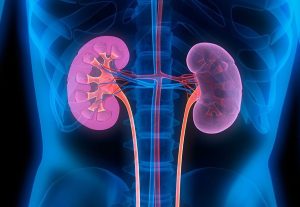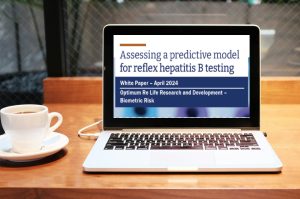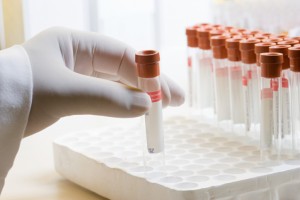In our continued effort to improve the applicant experience while adhering to the latest medical standards, we have updated our fasting guidelines for life insurance exams. Our recommendation to clients and applicants is that fasting is no longer necessary before a life insurance blood or urine collection. This recommendation is based on evidence that shows the minimal impact that fasting plays on the standard life insurance laboratory panels. This update not only allows greater flexibility for applicants to complete exams throughout the day, it also follows the medical community’s guidelines for fasting.
Historically, the insurance industry required fasting because it was believed to produce more accurate glucose and lipid tests. When we switched to A1c testing on all specimens in 2016, this eliminated the need for fasting because A1c is not impacted by a recent meal, as glucose is a more reliable determination of long-term glucose control. Additionally, clinical research as well as our own internal fasting studies show that triglyceride is the only other analyte affected by a recent meal. Armed with the “hours fasted” information, underwriters can make a sound decision on each applicant.
For any additional clinical support of this recommendation, see below references and sources.
“Fasting times showed little association with lipid subclass levels in a community-based population, which suggests that fasting for routine lipid levels is largely unnecessary.”
Source: Davinder Sidhu, Christopher Naugler. Fasting Time and Lipid Levels in a Community-Based Population. Archives of Internal Medicine. 2012; 172(22): 1707-1710.
“The exceedingly small gain of information from a fasting blood test likely does not offset the logistical constraints put on patients, laboratories, and doctors for the procedure.”
Source: (Editorial) Dr. J. Michael Gaziano. Comparison of a Novel Method vs the Friedewald Equation for Estimating Low-Density Lipoprotein Cholesterol Levels From the standard Lipid Profile. Archives of Internal Medicine. 2012; 172(22): 1705-1706.
“Most lipid levels differed minimally when measurements were performed nonfasting or fasting, with clinically insignificant changes; negligible changes for high-density lipoprotein (HDL) cholesterol, slight changes (up to 8 mg/dL) for total cholesterol, LDL cholesterol, and non-HDL cholesterol; and modest changes (up to 25mg/dL) for triglycerides.”
Source: Samia Mora. Nonfasting for Routine Lipid Testing From Evidence to Action. JAMA Internal Medicine. July 2016; Volume 176 Number 7, 1005.
“Lipid levels at most change minimally in response to normal food intake in individuals in the general population. Furthermore, nonfasting lipid profiles predicted increased risk of cardiovascular events.”
Source: Ann Langsted, Jacob J. Freiberg, Borge G. Nordestgaard. Fasting and Nonfasting lipid levels: influence of normal food intake on lipids, lipoproteins, apolipoproteins, and cardiovascular risk prediction. Circulation. 2008; 118: 2047-2056.
“Measurements of hemoglobin A1c [HbA1c] more accurately identify persons at risk for clinical outcomes than the commonly used measurement of fasting glucose.”
Source: Hemoglobin A1c Outperforms Fasting Glucose for Risk Prediction. John Hopkins Bloomberg School of Public Health , JHSPH.edu,. March 4, 2010. http://www.jhsph.edu/news/news-releases/2010/selvin-blood-test.html?source%3Drss
For additional support for this decision, please see our “To Fast or Not to Fast” white paper or contact Betsy Sears, Executive Vice President, Laboratory Strategy and Sales, at Betsy.R.Sears@ExamOne.com, or Dr. Jim Palmier, Medical Director at James.A.Palmier@ExamOne.com with additional questions.
This does not change any specific carrier fasting guidelines.




















In our continued effort to improve the applicant experience while adhering to the latest medical standards, we have updated our fasting guidelines for life insurance exams. Our recommendation to clients and applicants is that fasting is no longer necessary before a life insurance blood or urine collection. This recommendation is based on evidence that shows the minimal impact that fasting plays on the standard life insurance laboratory panels. This update not only allows greater flexibility for applicants to complete exams throughout the day, it also follows the medical community’s guidelines for fasting.
Historically, the insurance industry required fasting because it was believed to produce more accurate glucose and lipid tests. When we switched to A1c testing on all specimens in 2016, this eliminated the need for fasting because A1c is not impacted by a recent meal, as glucose is a more reliable determination of long-term glucose control. Additionally, clinical research as well as our own internal fasting studies show that triglyceride is the only other analyte affected by a recent meal. Armed with the “hours fasted” information, underwriters can make a sound decision on each applicant.
For any additional clinical support of this recommendation, see below references and sources.
“Fasting times showed little association with lipid subclass levels in a community-based population, which suggests that fasting for routine lipid levels is largely unnecessary.”
Source: Davinder Sidhu, Christopher Naugler. Fasting Time and Lipid Levels in a Community-Based Population. Archives of Internal Medicine. 2012; 172(22): 1707-1710.
“The exceedingly small gain of information from a fasting blood test likely does not offset the logistical constraints put on patients, laboratories, and doctors for the procedure.”
Source: (Editorial) Dr. J. Michael Gaziano. Comparison of a Novel Method vs the Friedewald Equation for Estimating Low-Density Lipoprotein Cholesterol Levels From the standard Lipid Profile. Archives of Internal Medicine. 2012; 172(22): 1705-1706.
“Most lipid levels differed minimally when measurements were performed nonfasting or fasting, with clinically insignificant changes; negligible changes for high-density lipoprotein (HDL) cholesterol, slight changes (up to 8 mg/dL) for total cholesterol, LDL cholesterol, and non-HDL cholesterol; and modest changes (up to 25mg/dL) for triglycerides.”
Source: Samia Mora. Nonfasting for Routine Lipid Testing From Evidence to Action. JAMA Internal Medicine. July 2016; Volume 176 Number 7, 1005.
“Lipid levels at most change minimally in response to normal food intake in individuals in the general population. Furthermore, nonfasting lipid profiles predicted increased risk of cardiovascular events.”
Source: Ann Langsted, Jacob J. Freiberg, Borge G. Nordestgaard. Fasting and Nonfasting lipid levels: influence of normal food intake on lipids, lipoproteins, apolipoproteins, and cardiovascular risk prediction. Circulation. 2008; 118: 2047-2056.
“Measurements of hemoglobin A1c [HbA1c] more accurately identify persons at risk for clinical outcomes than the commonly used measurement of fasting glucose.”
Source: Hemoglobin A1c Outperforms Fasting Glucose for Risk Prediction. John Hopkins Bloomberg School of Public Health , JHSPH.edu,. March 4, 2010. http://www.jhsph.edu/news/news-releases/2010/selvin-blood-test.html?source%3Drss
For additional support for this decision, please see our “To Fast or Not to Fast” white paper or contact Betsy Sears, Executive Vice President, Laboratory Strategy and Sales, at Betsy.R.Sears@ExamOne.com, or Dr. Jim Palmier, Medical Director at James.A.Palmier@ExamOne.com with additional questions.
This does not change any specific carrier fasting guidelines.